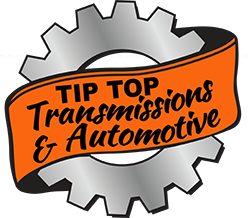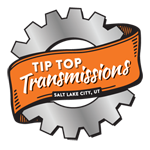There are several possible auto repair services that are somewhat or even closely related to one another despite ultimately being different, and a great example here is the realm of wheel alignment and tire rotation. While these are similar and often related tasks that often carry some of the same kinds of benefits, they are not identical – and understanding the differences can be helpful if you’re in need of one or the other.
At Tip Top Transmissions, we’re proud to offer a huge range of not only transmission service, but also other auto mechanic services of any kind for clients around Salt Lake City. We provide wheel alignment and related services to many clients, ensuring both safety and long-term viability for their tires and connected vehicle areas. Here are some basics on how wheel alignment and tire rotation compare, plus which you might require depending on your vehicle’s status.

Tire Rotation – Typically a Preventive Measure
When you hear the term tire rotation, what’s typically being referred to is a regular maintenance process that many drivers will go through at regular intervals. This is typically done every 3,000-7,000 miles depending on the specific vehicle in question and how much it’s driven during this time.
Tire rotation involves moving the tires from one position to another – for instance, you might move front tires to the back, and vice versa. The purpose here is to ensure even wear and tear on all four tires, which can prolong their lifespan and also prevent issues like blowouts or uneven tread patterns.
There are some rare cases where a specific event will prompt a tire rotation, such as one of the tires wearing down faster than it should. However, in most cases this is simply a preventive measure meant to reduce long-term wear and tear.
Wheel Alignment – A Corrective Measure
On the other hand, wheel alignment is often considered more of a corrective measure within the auto repair world. It’s not necessarily done on a regular schedule, but rather when an issue arises – and many drivers may never need it done at all during their vehicle ownership.
Wheel alignment involves adjusting the angles of the tires to ensure they are properly aligned with each other and with the road. This can help improve handling, steering, and overall vehicle performance.
Signs Each is Needed
As we went over above, there aren’t necessarily “signs” that a tire rotation is needed – it’s just a preventive measure that drivers will undergo at certain intervals. If you’re concerned about uneven wear and tear on your tires, this may be a sign that rotation is needed.
For wheel alignment, on the other hand, there are several signs to look out for. These include:
- Steering wheel shaking or pulling: Have you noticed that your steering wheel shakes or pulls to one side while driving? This could be a sign of misaligned wheels.
- Uneven tire wear: If you notice that the tread on each tire is wearing down unevenly, this could also indicate a need for wheel alignment.
- Vehicle pulling to one side: If it feels like your vehicle is constantly pulling to one side, this could be a sign of improper wheel alignment.
- Increased stopping distance: When your wheels are misaligned, it can affect your vehicle’s braking system and increase the distance it takes to stop.
- Squealing sounds: Misaligned wheels can cause your tires to squeal while driving, which is a clear sign that something is not quite right.
If you notice any of these signs, it’s important to have your wheel alignment checked and potentially adjusted as needed. And remember, regular tire rotation can help prevent the need for frequent wheel alignments in the future.
Why Misaligned Wheels Are Problematic
There are actually a few specific reasons why misaligned wheels need wheel alignment correction:
- Safety: Naturally, misaligned wheels can lead to safety issues while driving, such as poor handling and increased stopping distance. By correcting the alignment, you can help ensure your vehicle is safe to drive.
- Uneven tire wear: As mentioned before, misaligned wheels can cause uneven tire wear. This means that certain tires may wear down faster than others, which can lead to the need for premature replacements.
- Costly repairs: Constantly driving with misaligned wheels can also lead to other automotive issues, such as suspension damage. This can lead to costly repairs down the line, making regular wheel alignments a more cost-effective option.
- More money spent on gas: Misaligned wheels can also affect your vehicle’s fuel efficiency, causing you to spend more money on gas in the long run.
While wheel alignment and tire rotation may seem similar, they serve different purposes and are recommended for different reasons. Regular tire rotations can help prolong the life of your tires and prevent issues such as blowouts, while wheel alignments correct misalignments and improve the overall performance and safety of your vehicle.
No matter the service needed, you can count on Tip Top Transmissions to provide quality and reliable work at an affordable price. Our team of experienced mechanics is here to help with any transmission or other auto repair need around SLC. Contact us today!

